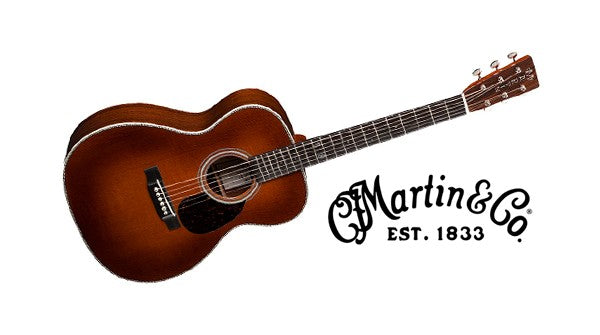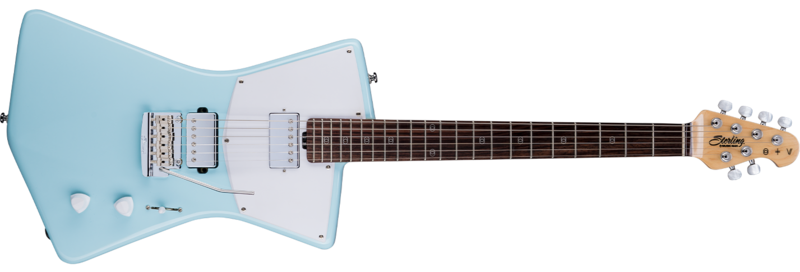Your Cart is Empty
Setting Up an Acoustic Guitar
December 19, 2017 8 min read

Acoustic guitars might all be built for a common purpose but they are as individual as the people who play them, so to make sure that your guitar is not only at its optimum when it comes to playing, but comfortable and suited to your own personal needs. Think of it as having bought a car, yes the major work is done for you but even if brand new you still need to adjust the seat and find the perfect angle for the wing mirror. This fine tuning of the hardware is known as “setting up.” New guitars will come with a factory set up but as this is done from a “one size fits all” ethic, you will still need to make your own adjustments.
This set-up guide will give some basic, measurable parameters needed to keep your acoustic guitar in optimum playing condition. Since every guitar neck, saddle height, nut height, neck angle, fret, and top condition may be slightly different, using some average measurements can give any guitar a basic, comfortable "feel". Personal preferences in string gauge, playing style and technical ability will determine how closely to "spec" you'll want to set your own instrument; there is not one set of parameters that is perfect for everyone.
This guide also assumes that you know the parts of your guitar, some basic terms, and that the guitar you're adjusting has no structural damage; (i.e. worn or popped-up frets, separating bridge, loose or broken top braces, cracked nut or saddle, cracked or loose neck joint.)
There are a basic set of tools that every guitar player should have in his bag, whether you are just starting out in your bedroom or about to step onto a stage in front of 300 people, keeping your guitar in the best working order is vital to getting the best sound out of it and having the most fun playing it.
- Set of automotive feeler gauges (.002 - .025)
- 6" ruler (with 1/32" and 1/64" increments)
- Light Tung oil or lemon oil
- Small Phillips screwdriver
- 1/2" nut driver
- Tuning fork or electronic tuner
- Wire cutters
- Peg winder
- Polish and cloth
Strings
After an initial visual inspection of the guitar, the least expensive and most dramatic enhancement to a guitar's sound and playability is to install a fresh set of strings. Loosen and remove all of the old strings and while the strings are off the guitar, it's the perfect time to clean and seal the fingerboard and bridge. Light Tung oil or lemon oil are fairly traditional sealers but Bee's wax compounds are also excellent. It should be noted that you should never use standard guitar polish on unfinished fingerboards or bridges as they can actually dry out the wood. When installing new strings, there are a few things that can be overlooked and may cause some problems later on.
- Make sure the ball end of the string is seated snugly against the bridge pin at the bridge plate; this will insure that no pitch slipping occurs; (this is usually the cause of what a lot of people think is "string stretch”).
- Carefully wrap the strings around the tuning posts downward from the tuning post anchor hole; two to three complete wraps around the tuning post on the bass strings, and at least three complete wraps on the treble side, but no more than five are necessary. This will maintain the proper angle of the string over the nut.
- Bring the strings completely up to pitch. Even a quarter-step below pitch can relax the tension in the top (behind and in front of the bridge) and the neck, leaving the guitar sounding a little dull and lifeless. It is worth bearing in mind that the more tension in the wood means the more volume and sustain you will naturally achieve. Once the strings have settled "up" to pitch, you can start to check some of the measurements that determine great playability. Doing the steps out of order will force you to go back and recheck things over and over, so... maintain the flow, and your instrument will fall right into “spec".
Check and Adjust The Neck For Straightness
Acoustic guitars are equipped with one of two types of truss rod. The "Standard" truss rod is one which adjusts at the heel of the neck the other adjusts at the headstock, but both operate on the same principle. The "Standard" truss rod can counteract concave curvature, for example, in a neck that has too much relief, by generating a force in the neck opposite to that caused by excessive string tension.
Remove the truss rod cover, if so equipped, and apply a capo at the 1st fret. Press down the 6th string at the 14th fret with your right hand. With a feeler gauge, measure the distance between the top of the 5th fret and the bottom of the 6th string. There should be a small gap (.006"+/- .002"); remember this gap will be one-half the thickness of the 1st string (.012"). This will determine the "neck relief" necessary to prevent string "buzz" caused by the normal vibration pattern (string excursion) of the strings. Less than a .006" gap may cause a "buzz" or cause "fret out" if some high frets exist. Use a 1/4" nut driver to turn the truss rod clockwise to straighten the neck or counter-clockwise to add some "relief".
Note: Medium gauge strings (.013"-.056") have higher tension, with less "string excursion", needing more truss rod tension to counteract the stronger string pull. This results in more volume, sustain and more "wood" in the guitar's tone. Note: In either case, if you meet excessive resistance or need for adjustment, or you're not comfortable with this adjustment, take your guitar to your authorized service center or luthier.
Check The String Height At The 12th Fret
Remove the capo from the 1st fret and whilst looking at the side of the fingerboard on the bass side, place your small ruler behind the 6th string directly on the 12th fret. Measure the distance from the top of the 12th fret to the bottom of the 6th string. This gap should be from .085" to .093" (5.5/64" to 6/64"). Now measure the 1st string in the same fashion; place your ruler on the 12th fret behind the 1st string, then check the gap between the top of the 12th fret and the bottom of the 1st string.
This gap should be .070" to .078" (4.5/64" to 5/64"). If the gap is too wide, you must "shave" the bottom of the bridge saddle or replace it with a shorter saddle. Either way, you'll probably have to do some cutting, so it's just as easy to shave the existing one. If the gap is too narrow, you'll need to put in a taller saddle. You could shim your existing saddle in a pinch, but shimming can dull the tone if it doesn't fit properly; so you may as well just cut a taller saddle, making sure the "radius" (side-to-side arc) on the top of the saddle matches the radius of the fingerboard.
Adjust (Shave) The Saddle
Loosen the strings, but don't remove them from the tuners. Place your capo back on the 1st fret, you can now pull and remove the bridge pins from the bridge with no damage to the tuning post windings. Draw a light pencil line across the base of the saddle along the top of the bridge. Use pliers or wire snips to gently lift the saddle from the saddle slot. A word of warning, don't try to pry it up or you may chip wood away from the bridge slot. Using a flat file, remove an amount of material from the bottom of the saddle double the amount of the 12th fret overage, i.e. if your 12th fret gap is 1/64" too high, you need to remove 2/64"(1/32") from the bottom of the saddle.
Drop the saddle back into the saddle slot and draw another pencil line across the saddle at the base of the bridge. Pull the saddle out again and check your work. The critical aspect here is to keep the bottom of the saddle flat and level so it sits flat in the saddle slot. If the saddle gets rounded off, you'll lose volume on the bass or treble side, or even worse, if your guitar is equipped with an electronic transducer, you'll lose response. When you have completed the modification to the saddle, re-install it into the slot, then re-seat the strings and re-install the bridge pins. Remove the capo and retune the guitar to pitch. Because you've taken the tension off the neck by loosening the strings, you must now go back and check the neck straightness (using the preceding procedures), as the truss rod may have shifted during tension release. Now remove the capo and recheck your 12th fret measurements. Repeat the shaving procedure if necessary. As always if you feel you need this adjustment to be made and you're not comfortable with the procedure, take your guitar to your authorized service center or luthier.
Check The String Height At The 1st Fret
Again, using the feeler gauge, measure the gap between the top of the 1st fret and the bottom of the 6th string; the gap should be .022" +/- .002". Measure the 1st string gap in the same fashion; with a feeler gauge between the top of the 1st fret and the bottom of the 1st string. The gap at the 1st fret should be .020" +/- .002". Each string must be measured and adjusted separately because you shouldn't remove the nut to shave the bottom as you would with the bridge saddle.
Caution: The following procedure should only be made with the proper files and a certain amount of experience. If you feel you need this adjustment to be made and you're not comfortable with the procedure, take your guitar to your authorized service center or luthier.
Carefully cut the string slots in the nut with "nut slot files". Angle the string slots downward towards the headstock to relieve any pinching of the strings that may happen on that side of the nut. If you cut too deeply, the slot can be filled with a mixture of baking soda and crazy glue, and, after it sets, the slot can be cut again. Caution: the nut must be isolated with masking tape and wipe away any excess crazy glue with a piece of tissue paper to protect the finish around the nut. Retune your guitar, it should now meet factory specifications and "play like butter".
There is a lot of technical work detailed above, some of which you may not feel comfortable with right away but as the analogy in the introduction points out, this is the equivalent of working on your favourite car so learn to understand and love your guitar, it is a masterful piece of work combining woodcrafting and acoustics, physics and aesthetics, and the process of keeping it in perfect condition or modifying it, working out its limits and its individual characteristics are all part of the enjoyment of the instrument. And to take that analogy to breaking point. Do you want to be driven around in a chauffeur-driven car just looking at the view whilst someone else operates the pedals or do you want to get behind the wheel, open this thing up and really see what it can do?
Leave a comment
Comments will be approved before showing up.
Also in Adirondack Guitar News and Blog
Browse Our Store
Recent Articles
- Left Handed Guitarists Who Learned to Play Right Handed July 13, 2021
- The History and Importance of the Martin 28 Style July 13, 2021
- Adirondack Guitar Profiles: St. Vincent July 13, 2021
- Adirondack Guitar Profiles: John Petrucci May 05, 2021
- How to Turn Your Music Skills into a Career March 30, 2021



